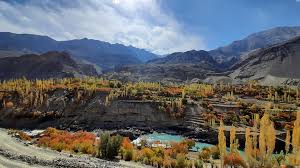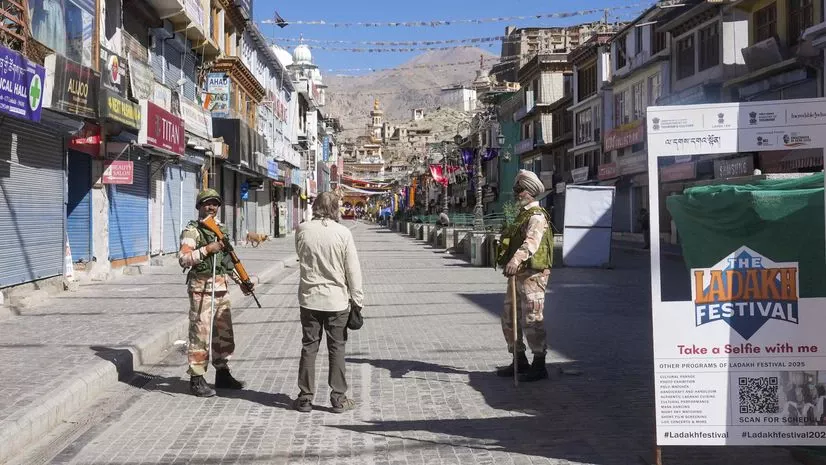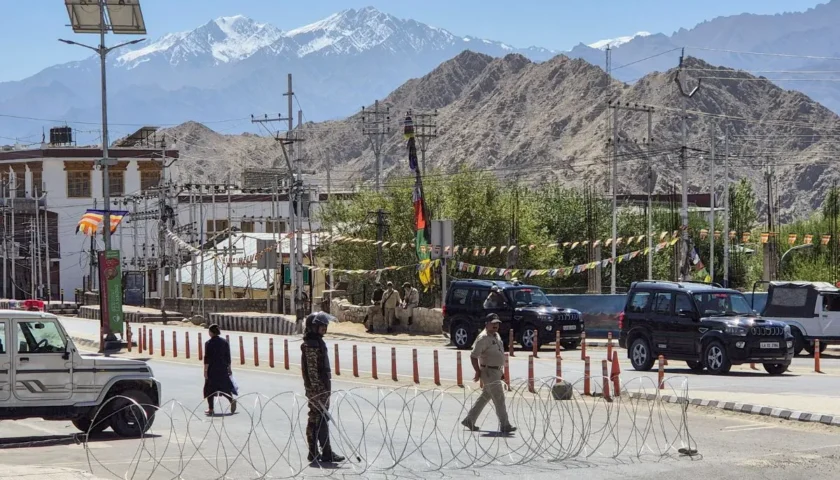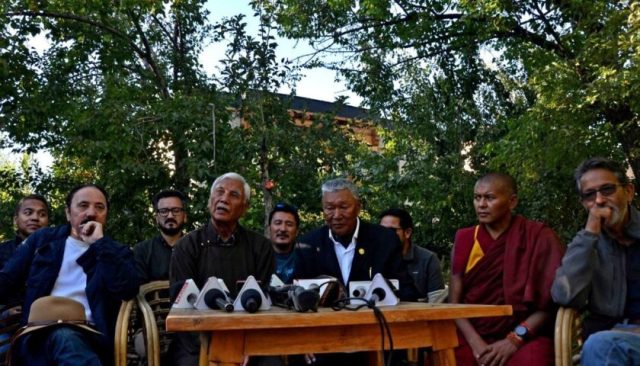Indo-Russian collaboration brings researchers and local communities together to tackle glacial melt, water insecurity, and ecological disruption in one of Earth’s most fragile ecosystems.
By: Javid Amin | Srinagar | 08 July 2025
Where Science Meets Survival
Amid growing concerns over the accelerating impacts of climate change on the Himalayas, Ladakh has become the epicenter of a pioneering global climate expedition. The 3rd International Summer School and Expedition, running from July 5 to 15, has drawn scientists, students, environmentalists, and community leaders from India and Russia to co-develop strategies for mountain resilience.
Who’s Behind the Mission?
This cross-border collaboration is being led by a diverse consortium of academic and research institutions:
- PGDAV College, University of Delhi
- Centre for Interdisciplinary Studies on Mountain and Hill Environment (CISMHE)
- Institute of Mountain Environment, Bhaderwah Campus, University of Jammu
- HSE University, Saint Petersburg, Russia
Their shared goal is to blend scientific inquiry with traditional ecological knowledge to formulate practical, scalable, and inclusive responses to environmental challenges.
“Collaborative outreach like this is vital to inform governance frameworks and develop adaptive responses in ecologically fragile areas,” said Prof. Rahul Gupta, Rector of Bhaderwah Campus.
What Are They Studying?
Over the 10-day field expedition, participants are conducting multidisciplinary research on:
- Accelerated glacial melt due to rising temperatures
- Erratic precipitation, unseasonal snowfall, and sudden hailstorms
- Water scarcity impacting drinking supplies, irrigation, and livestock
- Loss of traditional livelihoods due to shrinking pastures and reduced crop yields
- Unregulated tourism and construction disrupting local ecosystems
Researchers are engaging directly with farmers, herders, local panchayats, and youth groups to understand ground realities and co-design community-led solutions.
Why It Matters: The Fragility of the Indian Himalayan Region (IHR)
Stretching across 13 Indian states, the Indian Himalayan Region (IHR) is one of the world’s most ecologically sensitive and climate-vulnerable zones. Ladakh, with its cold desert climate and unique socio-ecological fabric, is already showing:
- Glacier retreat at unprecedented rates
- Shortened growing seasons and unpredictable planting windows
- Flash floods, landslides, and glacial lake outburst floods (GLOFs)
- Biodiversity loss affecting pollinators, native species, and high-altitude flora
“Climate change here is not theoretical—it’s visible in the soil, snow, and sky,” said Dr. Svetlana Petrova, a glaciologist from HSE University.
Voices from the Ground
Local communities are not passive observers but active collaborators:
Tsering Dolma, a farmer from Stok:
“We’ve changed how we store water, but it’s still not enough. The winters are drier, and the summer snowmelt finishes too early.”
Rigzin Namgyal, a traditional herder:
“Some pastures are gone. The animals must walk farther, and sometimes we lose them to landslides.”
These stories are feeding into research models and inspiring low-cost, high-impact adaptation techniques, including:
- Artificial glaciers and ice stupas for water retention
- Agro-ecological farming practices tailored for cold-arid regions
- Renewable energy integration to reduce fossil fuel dependence
Indo-Russian Collaboration: Science Without Borders
This initiative reflects growing international recognition that climate change knows no borders. The Russian team brings expertise in permafrost studies, glacial geomorphology, and Arctic environmental policy, which complements the Indian team’s local knowledge and Himalayan field experience.
Together, they are working to:
- Establish a transnational Himalayan monitoring network
- Publish an open-source mountain climate resilience toolkit
- Train local youth in citizen science and environmental stewardship
“This is not just about measuring climate—it’s about transforming how we live with it,” said Prof. Varun Joshi, environmental sociologist from CISMHE.
From Data to Action: What Happens After July 15?
The expedition’s final phase includes a policy roundtable with regional administrators, climate officials, and development planners. Key outcomes expected:
- White paper submission to the Ministry of Environment, Forest and Climate Change (MoEFCC)
- Recommendations for Ladakh’s climate-resilient development strategy
- Integration of indigenous knowledge into state climate adaptation frameworks
- Proposals for new green funding mechanisms targeting Himalayan districts
The Broader Impact: Beyond Ladakh
Experts believe this summer school could serve as a template for similar programs in:
- Uttarakhand and Himachal Pradesh (facing glacier retreat and monsoon disruption)
- North-Eastern hills (experiencing biodiversity collapse)
- Jammu’s Pir Panjal (where development and deforestation are eroding watershed health)
The model promotes a just, inclusive, and science-backed approach to climate resilience in India’s highlands




